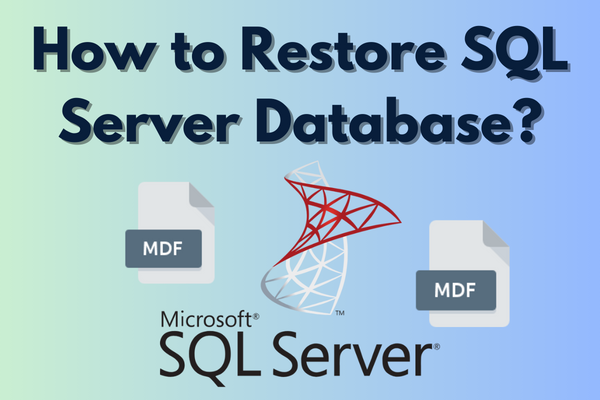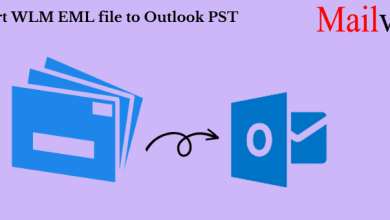How Do I Restore Objects in SQL Server?

This article discusses the top solutions on how to restore objects in SQL Server. In this blog post, we will discuss different solutions including both manual and automated to accomplish the task. Along with that, we will also see some of the top reasons why So, without wasting any further time, let us dive right into the article.
We all know how overwhelming it is to restore SQL databases. It gets even more overwhelming when you have to restore specific objects from the database. Worry not! In this article, I have shared different solutions including both manual and automated, so you can choose whichever one you find fulfilling your requirements to accomplish the task. Now without further ado, let’s move right to the solutions.
How to Restore Objects in SQL Server?
In this blog, I share two different ways you can restore your SQL Server objects efficiently. Let’s have a look at them.
- Restore the Transaction Log (T-Log) backup using command and clause and import the data.
- Use an expert-suggested automated tool to ensure a secure and hassle-free process.
Restore Transaction Log (T-Log) Backup and Import Data
The manual approach to restoring objects in SQL Server involves restoring the T-Log backup. This helps to perform in-time recovery of specific database objects using commands and clauses.
In this approach, we will use the “RESTORE LOG” command with a “STOPAT” clause that will help restore your T-Log backup to the specific time when your data was deleted or the object was dropped.
RESTORE LOG TestDB FROM DBLogTest WITH FILE=4, NORECOVERY, STOPAT = ‘march 30, 2021 02:00 PM’;
After executing the above-mentioned procedure, once you restore your T-Log back up to the point in time when you lost your data, import it to a new database.
This is how you can restore your database objects using the (T-Log) backup. Unfortunately, this solution also comes with certain limitations that make it an unattractive choice for users. Let’s have a look at them.
Drawbacks of the Solution
- This command will roll back all open transactions to a specific time which can make the process hectic and even more complicated.
- This manual approach is not recommended for novice users as it involves using commands that require executing the task with extreme precision and attention.
Due to these limitations, this solution becomes an unappealing choice for users. To ensure a hassle-free process, check out the following segment to see what experts recommend.
Expert Recommendation on How to Restore Objects in SQL Server
For the automated approach, you can check out the top 10 SQL Recovery Tools. Out of the listed softwares, the best choice is the SysTools SQL Recovery Tool. The utility is equipped with the best features that make it a one-of-a-kind among all other options. The tool supports restoring an entire database as well as specific object data according to user preference. Moreover, it is also compatible with all the SQL Server versions, thus, you will face no version compatibility issues. This amazing utility is deemed an expert favorite as it provides a high-reliability factor to its users.
Steps to Restore Objects in SQL Server Using the Software
- Download and launch the expert-suggested tool on your computer system.
- Click on the “Open” button to browse and upload your master database file to the tool.
- Next, either let the tool auto-detect or manually select the SQL Server version of your uploaded file from the provided options.
- Then, select either the Quick or the Advanced scanning mode according to how you want to scan your uploaded data based on its corruption level.
- Click on Export and choose how you want to export your data from the provided export options.
- Lastly, choose whether you want to export “only schema” or “schema and data” and click on the Export button.
This is how you use the tool to restore objects in SQL Server in a smooth and hassle-free way. Furthermore, we have also shared some of the highlighted features of this utility in the following segment; let’s check them out.
So There You Have It
In this article, we saw how to restore objects in SQL Server using both a manual as well as an automated solution. Unfortunately, the manual solution comes with certain limitations. Hence, experts recommend using the above-mentioned professional utility to ensure secure and hassle-free results.
Read More:



